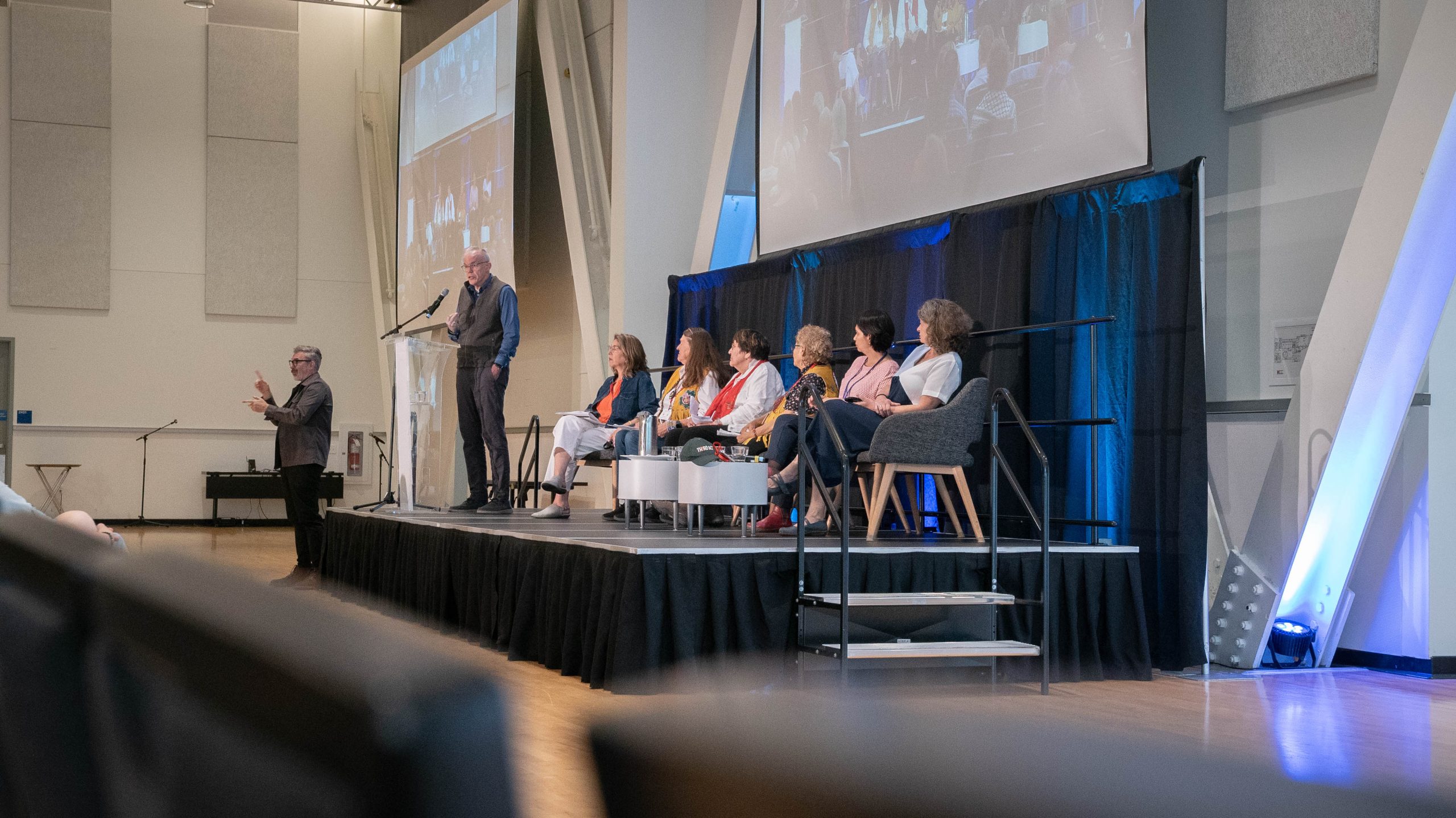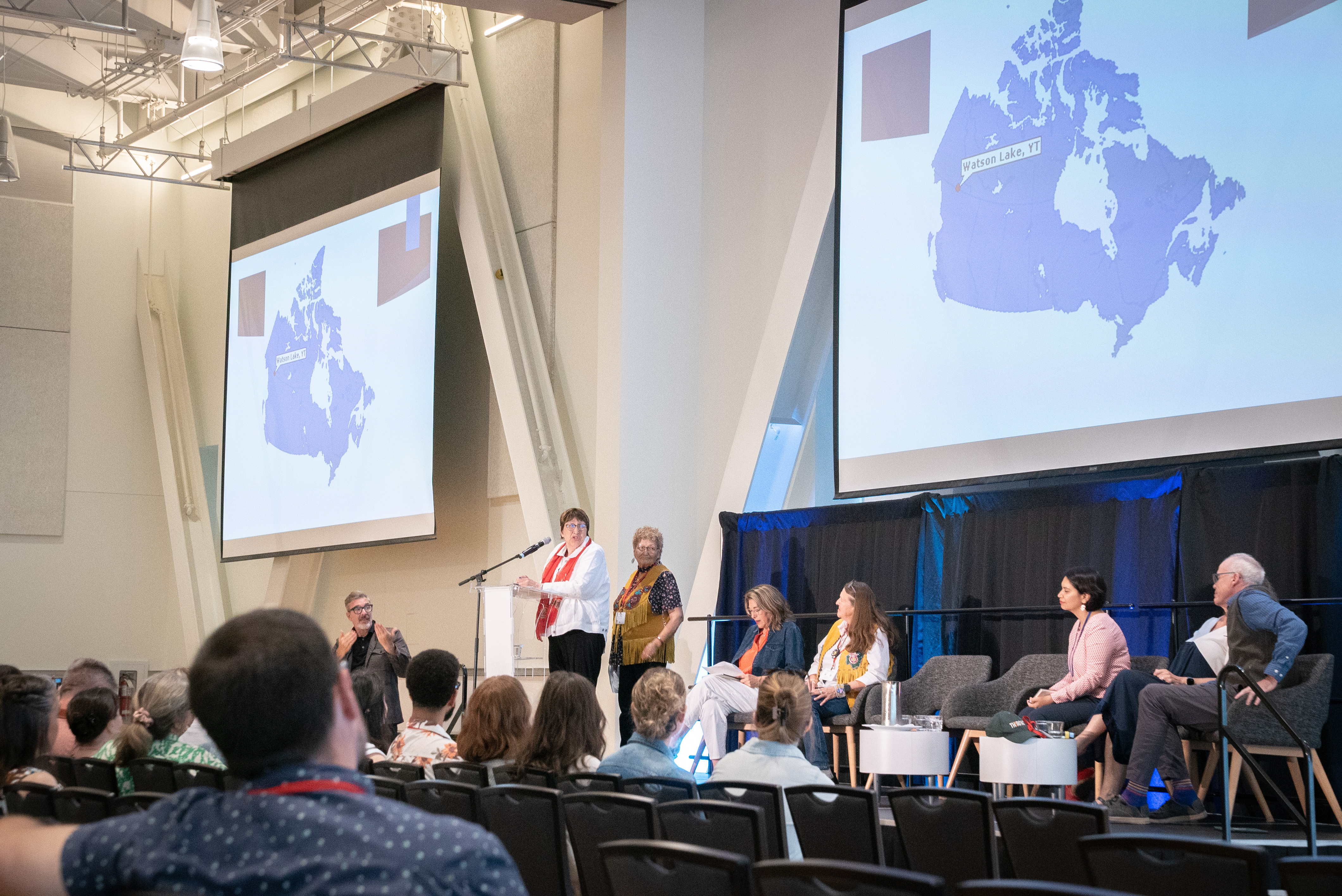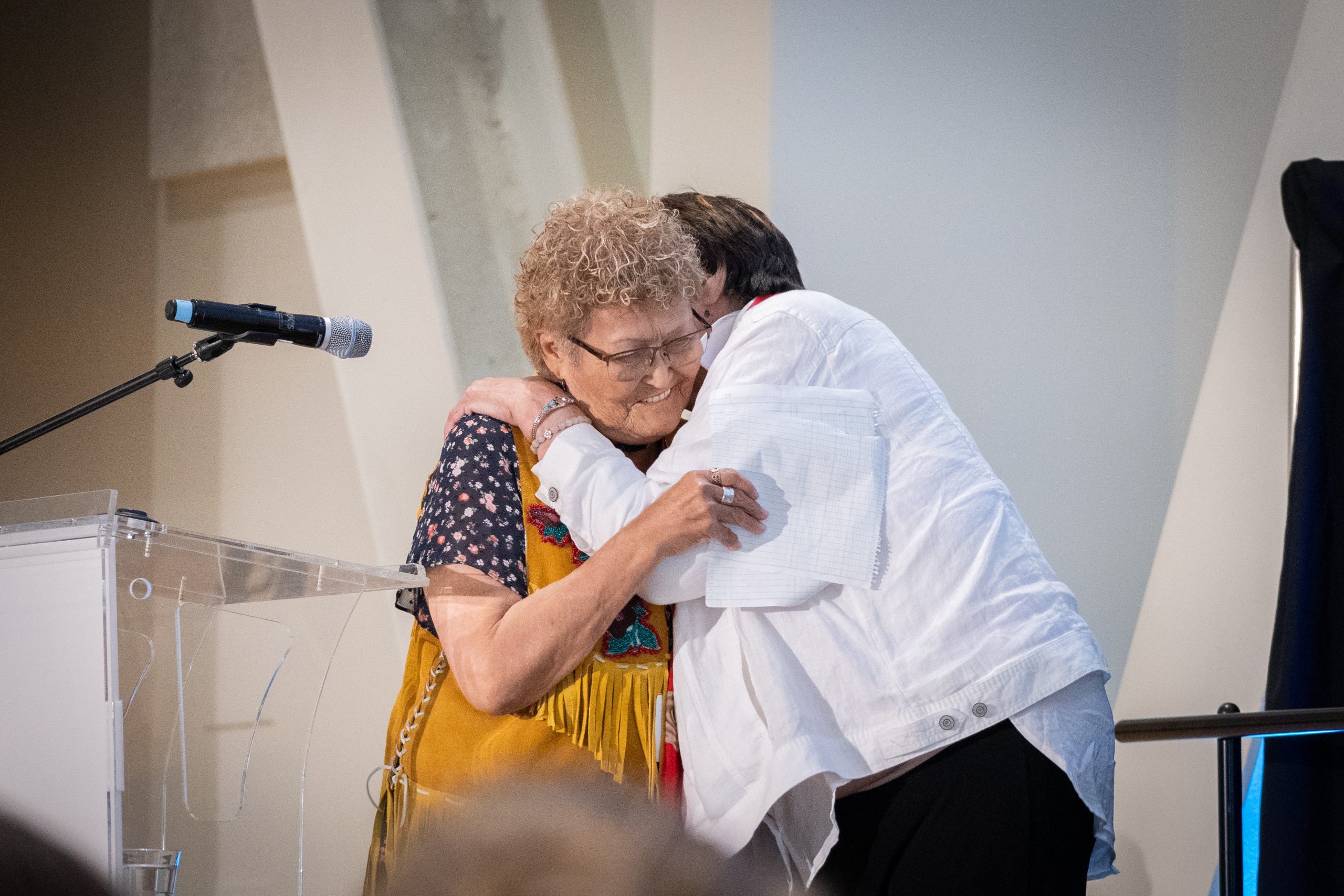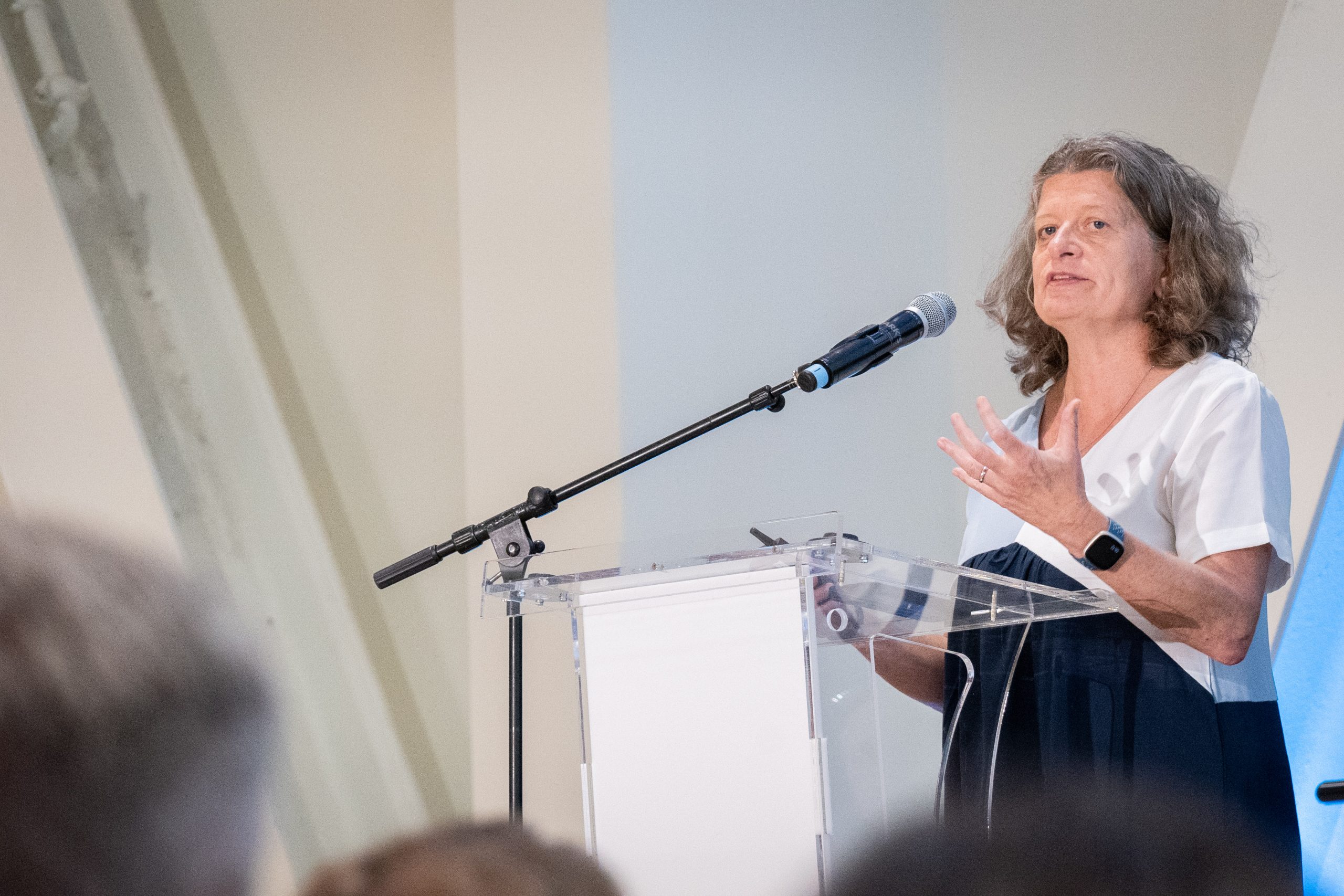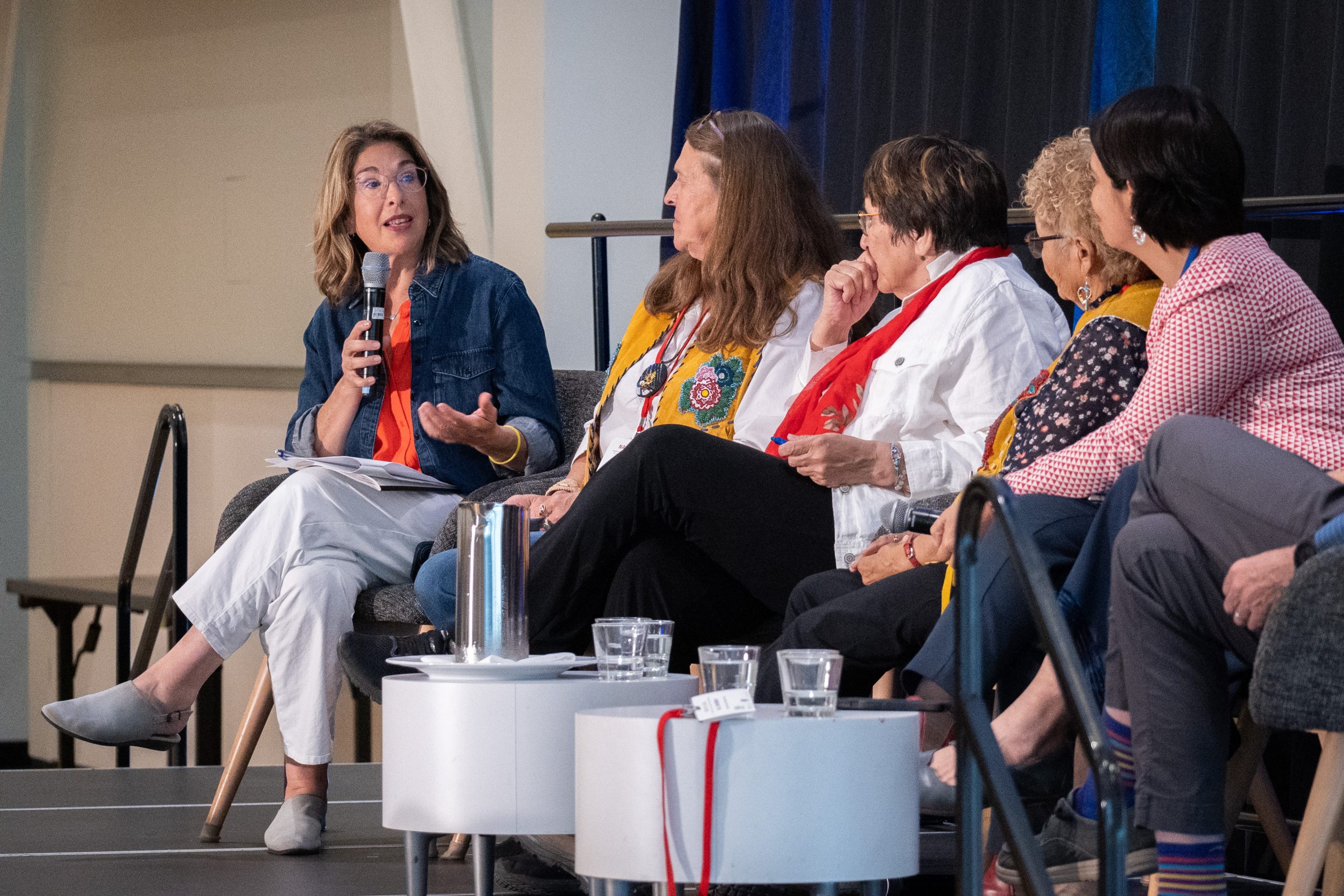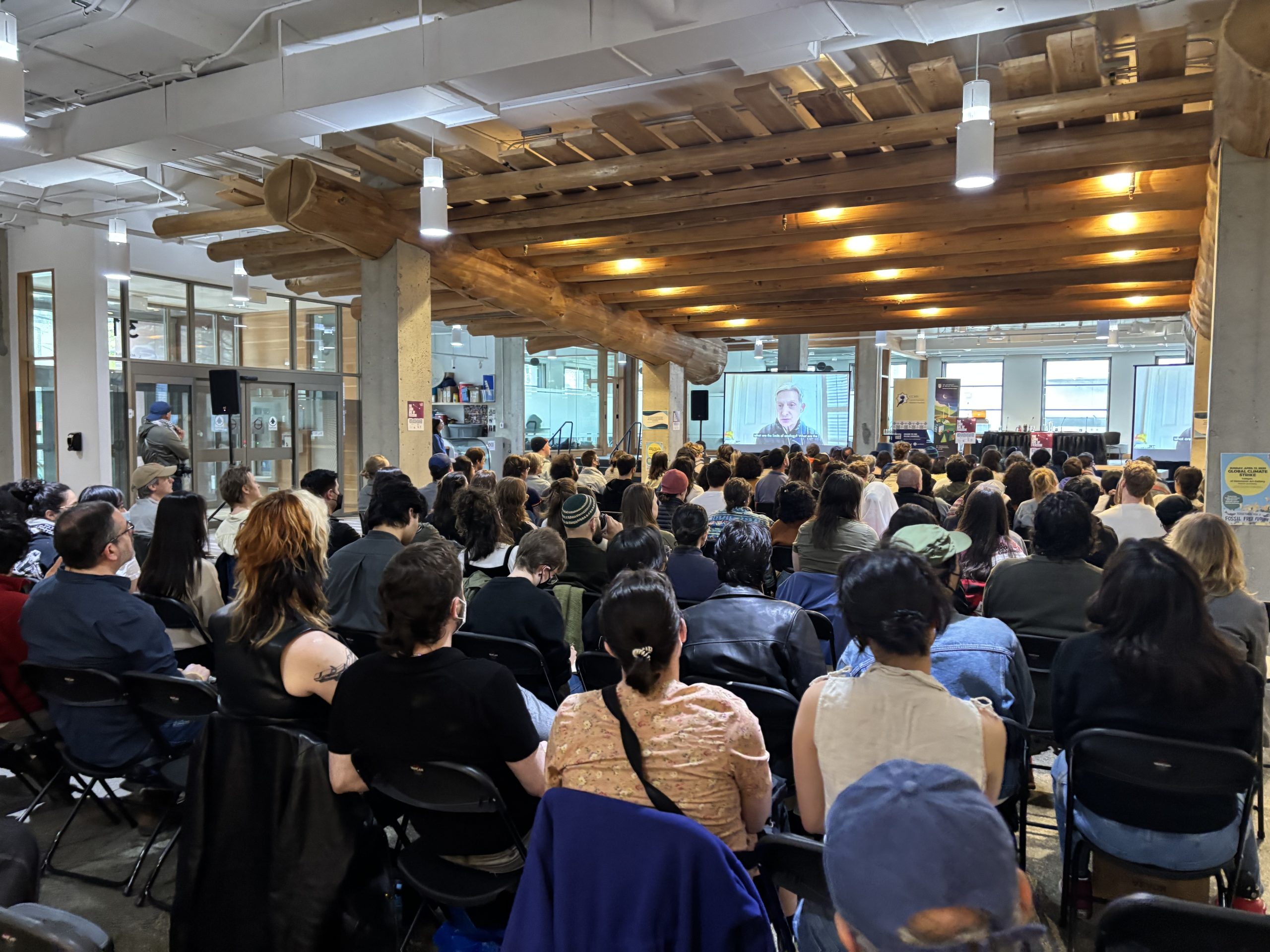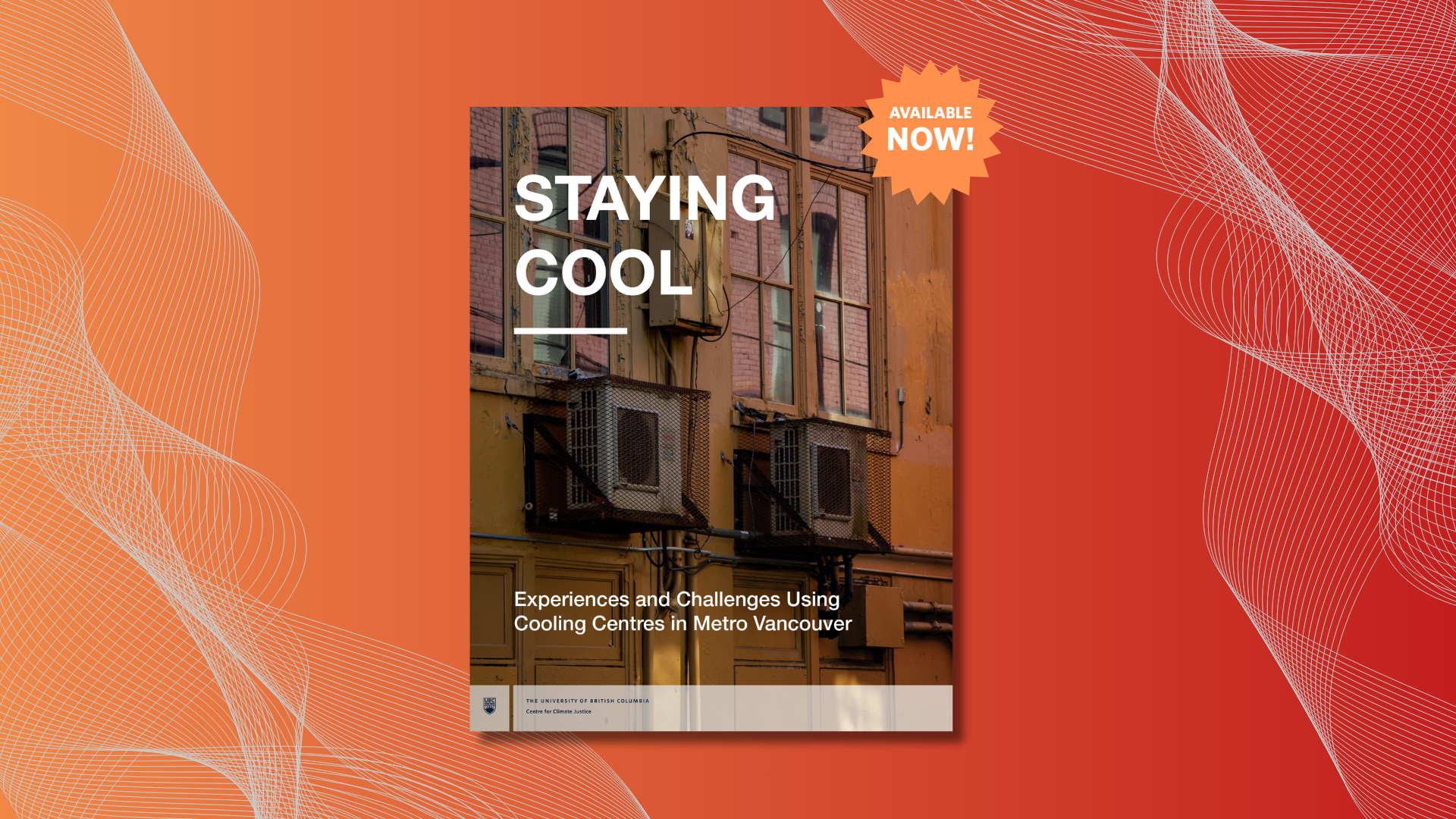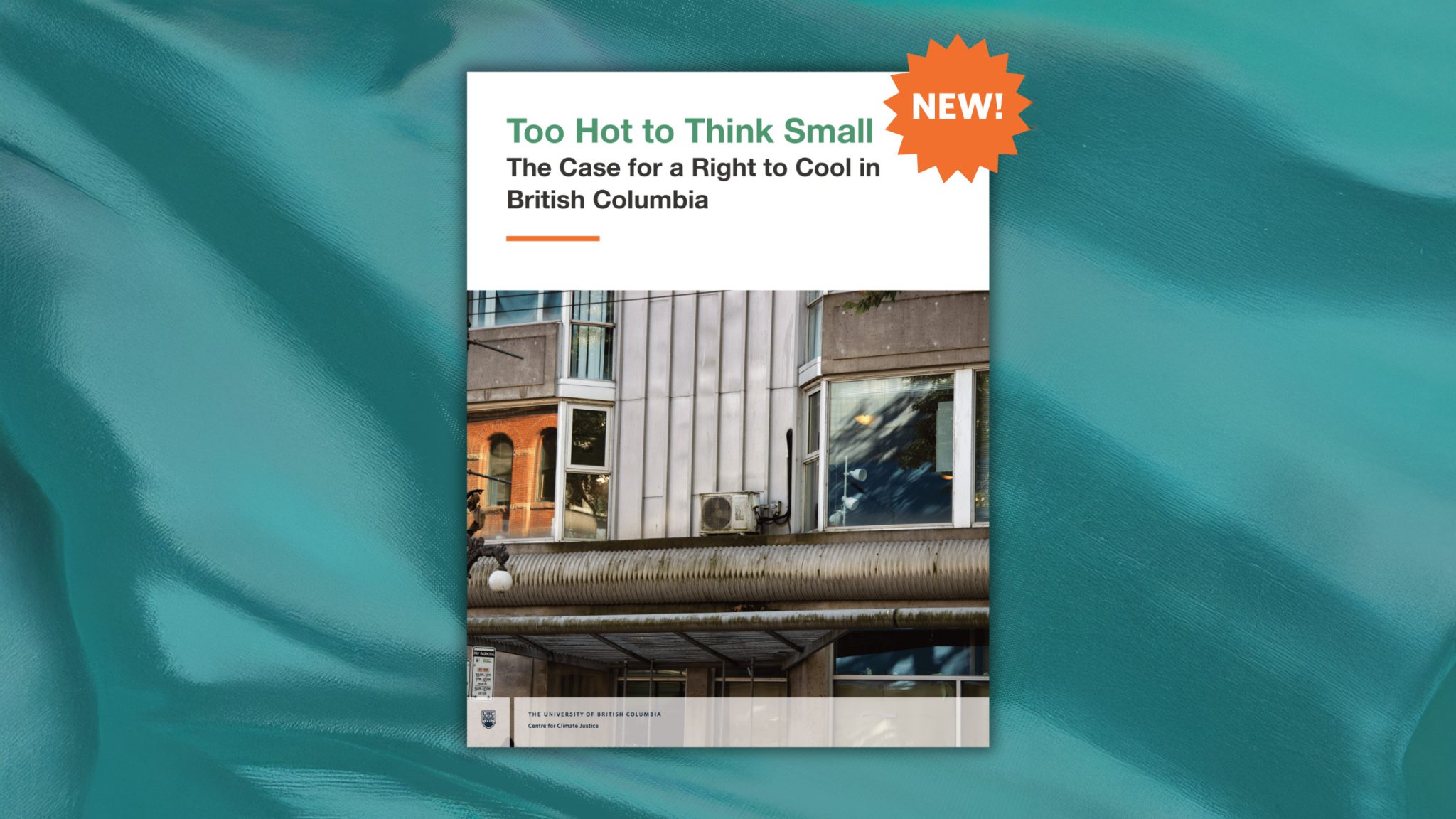

The ‘Critical Ecosystems vs. Critical Minerals’ panel, co-sponsored by Centre for Climate Justice, Interdisciplinary Biodiversity Solutions Collaboratory and moderated by Naomi Klein, brought together Bill McKibben, Linda McDonald, Dorothy Smith, Mary Maje, Cristina Dorador, and Justina Ray to explore the complex dynamics of critical minerals extraction—a key component of high-profile climate solutions like electric vehicles and solarization that also poses significant risks to local biodiversity and Indigenous communities.
Bill McKibben opened the discussion with a stark assessment of the current climate crisis. He highlighted that 2024 has been the hottest year in over 125,000 years, pointing to devastating impacts already visible worldwide. McKibben emphasized that places like Lytton, BC, which saw record-breaking temperatures, symbolize the urgency of addressing climate change. He argued that avoiding the worst outcomes requires drastic and immediate reductions in emissions, far beyond what individual behavioral changes can achieve, stressing the need for systemic changes in energy production.
Dorothy Smith (Councilor of the Ross River Dena Council) and Mary Maje (Kaska Elder from Tū Łī́dlīnī) delivered a powerful message about the devastating impact of colonization on Indigenous communities, particularly the Kaska people of southeast Yukon. They highlighted how their lives and lands have been profoundly altered without their consent, from the imposition of residential schools to the exploitation of their natural resources by mines. Smith emphasized the systemic oppression rooted in colonial ideology, describing how Indigenous people have been labeled and marginalized by a “colonial code” that justifies the theft of their land, culture, and autonomy. Maje detailed the imminent threat posed by the BMC mine to their community, describing how it endangers their traditional way of life, particularly the caribou calving grounds and other vital food sources. Their words underscored the ongoing struggle for sovereignty and the preservation of their lands and culture against continuing colonial exploitation.
Linda McDonald, esteemed Kaska Elder of the Liard First Nation, then examined the resource-intensive nature of the transition to renewable energy, with an emphasis on the BMC-owned mine that is threatening her community’s way of life. She described the mine as a lead, zinc, copper, silver, and gold operation, noting that “the life of the mine is projected to be nine to ten years, and the water treatment plant that they’re proposing is going to be there for perpetuity, meaning the water will never be clean.” McDonald acknowledged the environmental costs associated with mining these minerals but argued that the long-term benefits, including a reduced reliance on fossil fuels, justify these initial impacts. She also pointed to technological advancements and improved mining practices as ways to mitigate environmental harm.
Justina Ray (Wildlife Conservation Society Canada) critically examines the current approach to the critical minerals ‘gold rush’ in Canada, highlighting significant gaps in strategic planning and sustainability considerations. She argues that the focus is overly concentrated on project-level approvals, which ignore the broader ecological and social impacts. The absence of strategic, upstream planning has led to fragmented and outdated regulatory frameworks that fail to address cumulative impacts, such as the degradation of ecologically sensitive areas like peatlands, which are crucial for carbon storage. Ray emphasizes the need for a shift towards a circular economy approach, which prioritizes reducing raw material use and considers long-term environmental and social sustainability. Without this shift, she warns, the pursuit of critical minerals may undermine broader sustainability goals, exacerbating climate change and biodiversity loss.
Cristina Dorador (University of Antofagasta) highlighted the critical issues surrounding lithium extraction in Chile, particularly from the fragile ecosystems of the Atacama Desert’s salt flats, known as “salares.” These ancient, hypersaline lakes, once vast paleo lakes, now serve as key sources of lithium, a mineral vital for the global energy transition. However, the extraction process, which involves evaporating ancient water stores, has led to severe environmental degradation, including significant declines in biodiversity, especially among endemic species like flamingos, and has exacerbated social conflicts with indigenous communities. Dorador emphasized the paradox of promoting lithium as a green solution while causing irreversible damage to the environment. She questioned whether it’s possible to extract lithium without perpetuating extractivism and stressed the need for a shift in how these issues are approached politically, advocating for a future that balances technological advancements with robust conservation efforts.
In closing, the panel underscored the urgent need for rethinking current approaches to the energy transition, balancing the global demand for critical minerals with the protection of vulnerable ecosystems and communities. Our panelists emphasized the importance of redefining critical minerals to be anchored in those truly needed for decarbonization and combating climate change, rather than the broader array of minerals in the current definition, which largely serve the defense sector and other commodity interests. As the conversation around extractivism and environmental justice continues to evolve, it is crucial that we prioritize sustainable practices and equitable solutions. Watch the full recording of the panel here!

